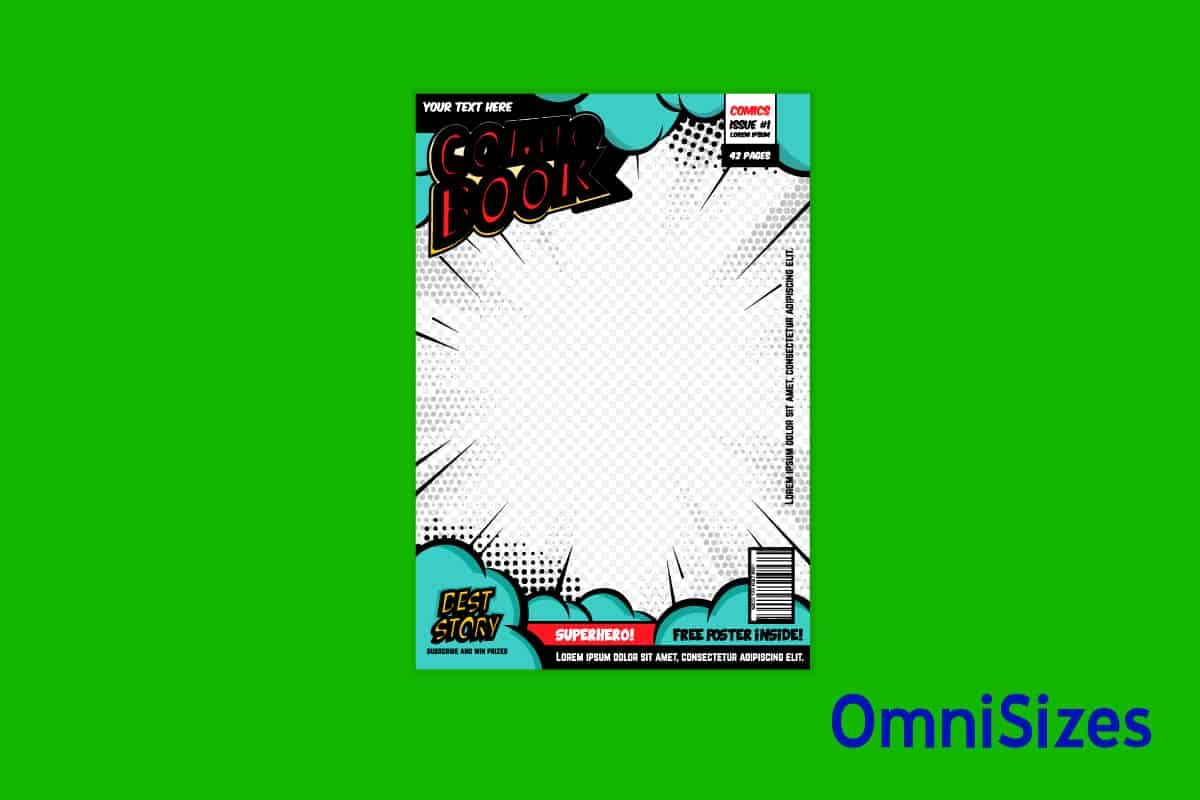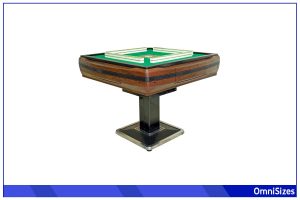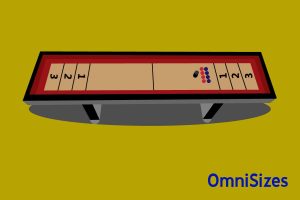Comic book sizes have evolved significantly since the inception of the medium. Over the decades, these sizes have not only influenced the way stories are told but also how they are consumed and collected by fans worldwide.
The standard comic book size, commonly found in the American market, measures approximately 6.625 × 10.25 inches (16.83 × 26.04 centimeters). However, there are several variations, including the Manga size, digest size, tabloid size, and treasury editions, each with its distinct dimensions.

This guide will explore the variations in comic book sizes over the years, as well as size difference between comic book formats.
Evolution of Comic Book Sizes
Comic books, those colorful realms of fantasy and action, have seen various sizes throughout history. Much like fashion trends, these sizes have come and gone.
1. Golden Age Comics (1938-1956)
The Golden Age marks the dawn of superheroes like Superman and Wonder Woman. Comics during this era were approximately 7.75 × 10.5 inches (19.66 × 26.67 centimeters). Larger in size compared to later editions, they were a visual treat, packed with vibrant illustrations and larger-than-life characters. However, as the years progressed and paper costs rose, publishers began considering more economical sizes.
2. Silver Age Comics (1956-1970)
Enter the Silver Age, an era characterized by a revival of superhero stories and the introduction of new iconic characters like Spider-Man. As comic book popularity surged, publishers leaned towards a slightly reduced size of about 7.125 × 10.5 inches (18.1 × 26.67 centimeters). This format was not only cost-effective but also easier for fans to handle and store.
3. Bronze Age Comics (1970-1985)
The Bronze Age followed, a period known for darker storylines and more mature themes. The size standards set during the Silver Age largely continued into the Bronze Age. However, this era saw experimentation in terms of content, with publishers pushing boundaries and challenging the status quo. The consistent size of 7.25 × 10.5 inches (18.42 × 26.67 centimeters) allowed for easy categorization on store shelves, aiding retailers and consumers alike.
4. Modern Age Comics (1985-present)
The Modern Age ushered in diverse storytelling, with complex plotlines and character development becoming the norm. With stories becoming more intricate, the need for clarity in visuals grew. Hence, the industry gravitated towards the now-standard American comic size of 6.625 × 10.25 inches (16.83 × 26.04 centimeters). This size, slightly narrower than its predecessors, offers a balanced blend of readability and portability.
Standard Comic Book Sizes
Comics have been a beloved medium for generations, capturing imaginations with vivid illustrations and compelling narratives. A crucial aspect worth understanding, especially if you’re thinking about proper comic book storage, is the size of these publications.
American Standard Comic Size
The American market predominantly embraces a specific comic size. This dimension has become synonymous with what many imagine when thinking of mainstream comics.
The American standard comic book traditionally measures about 6.625 × 10.25 inches (16.83 × 26.04 centimeters). This format offers a balance, providing ample space for artists to depict detailed scenes while ensuring that the book is easy for readers to hold and flip. The pages typically feature a combination of full-page illustrations, multi-panel layouts, and sometimes splash pages that span two pages for dramatic effect.
Manga or Japanese Comic Size
Manga, the Japanese counterpart to American comics, has a distinct size and presentation style, although it has gained immense popularity globally.
Manga usually measures approximately 5 × 7.5 inches (12.7 × 19.05 centimeters). Compared to American comics, they are more compact. They are often printed in black and white, focusing on intricate line art. The reading direction for Manga is typically right to left, opposite to the western left to right.
Variations in Comic Book Sizes
While there are standard comic book sizes that have dominated the industry, there have always been outliers—unique sizes that offer a different reading experience or cater to specific content needs.
1. Digest Size
Originally used for magazine formats, digest-sized comics found their niche, especially among younger readers.
Measuring about 5.5 × 8.5 inches (13.97 × 21.59 centimeters), digest comics are slightly larger than Manga but smaller than the American standard. They often sport a softcover and are perfect for shorter, episodic tales.
Digests became popular as a way to compile serialized comics from weekly or monthly magazines into a single volume. The size is compact, making it handy and perfect for a casual read, and was frequently seen in checkout lines at grocery stores or on newsstands.
2. Tabloid Size
These are the giants of the comic book world, offering large, immersive illustrations.
Tabloid-sized comics measure around 11 × 17 inches (27.94 × 43.18 centimeters). These are often hardcover and showcase artwork in an expansive format.
Due to their size, tabloids are not as common as other formats. However, they’re cherished by collectors and art enthusiasts. They’re used for special editions, reprints of classic stories, or artist portfolios where the emphasis is on showcasing detailed artwork.
3. Graphic Novel Size
Graphic novels, while content-wise differ from traditional episodic comics, also often deviate in size.
There’s some variance in graphic novel sizes, but a common size is about 6 × 9 inches (15.24 × 22.86 centimeters). This format is more in line with traditional books, making it suitable for longer, self-contained stories.
Graphic novels have surged in popularity in recent decades, offering readers a complete story arc in one volume. Their size is a comfortable middle-ground, making them ideal for both detailed illustrations and extended reading sessions.
4. Treasury Editions
These editions are collector’s items, often reprinting classic stories or featuring unique content.
Treasury editions typically measure 10 × 14 inches (25.4 × 35.56 centimeters). They’re larger than standard comics but not as unwieldy as tabloids.
These editions are often released to commemorate milestones or special events. Their size offers a fresh perspective on beloved stories, making them a favorite among longtime fans and collectors.






